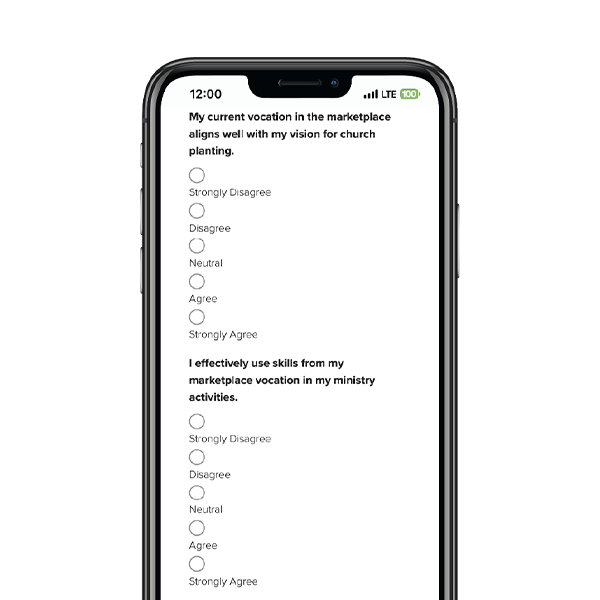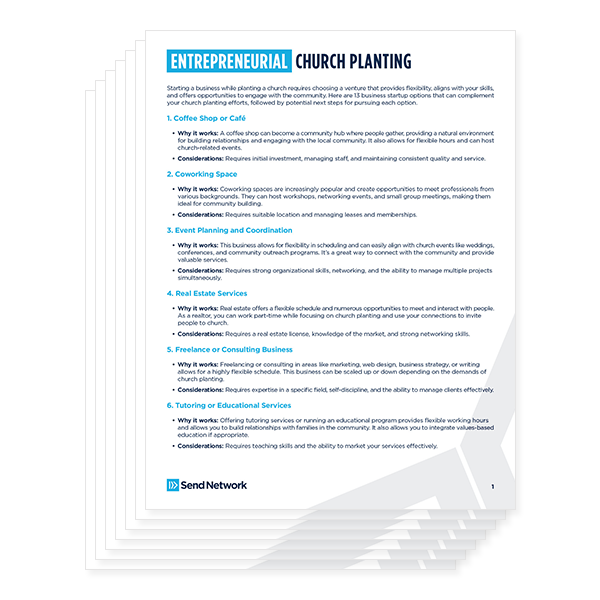By Dan Hyun
Earlier this fall, we had the privilege of sending out a new church plant into our city.
When we think about sending out new churches, many think only large churches with substantial resources can do such work. However, though our church would be considered relatively small, we’re experiencing the joy of helping start a new church.
Here are four intentional things we did:
1. PRAY.
The journey of sending out a new church plant began long before we had any tangible pieces in place. Our leadership and church continually prayed an increasing number of people would experience gospel transformation, including new life in Christ.
As we sought the Lord in prayer through Scriptures like Matthew 9:36-38, we were convicted one of the best ways this could happen in our city wasn’t just through growing our church but through new communities started to serve different areas of Baltimore.
Though we hope to help start new churches continually, our goal is never merely more churches. Our desire is for more people to experience the transformative power of the gospel.
We believe that’ll happen through the birthing of more intentionally missional and multicultural churches in our city. This strategy was birthed out of fires stoked in our hearts in prayer.
2. PREACH.
The concept of church planting is new for many Christians. So, one of the things we did was to talk a lot about church planting purposefully. Since some carried negative impressions of church planting, part of our goal was to address the “Why?”
We’d engage in conversations about how God uses new churches to engage unreached populations in unique and creative ways.
As we gave thanks for the wonderful things our church had the privilege to do, I’d remind our people the reason so many—including them—were experiencing the power of God was because our church had been sent out as a new church.
One of the weighty responsibilities pastors have is to determine what they preach from the pulpit. In many ways, a church community learns what the church values through what they hear through the preaching.
So as we seek to preach from the Bible faithfully, we intentionally point out the mission of God and frequently talk about the need for multiplication. We even did a mini-series on the topic of church planting to train our people on the biblical basis of multiplication.
The things we talk about most become normal in our churches. In our community, we hope the idea of starting new, healthy churches becomes quite normal.
3. PLAN.
Ministry in a city like Baltimore presents unique challenges. Because of issues like population transience and financial limitations, church planting will be far more difficult for a church in our context to attempt without a plan.
For us, that meant building church planting in as a significant part of our budget long before we actually planted. If this was important to us, it had to be reflected in our bottom line, especially as a smaller church without much margin in our finances.
One essential component of church planting is a called and qualified church planter, and we focused on identifying and developing this kind of leader through our residency program.
This also meant part of my time and attention had to be shifted to focus on equipping our church-planting resident. I viewed this as an opportunity to pass on everything I’d learned, including avoiding the many mistakes I’d made.
A critical aspect of sending out new churches as a smaller church is preparing the existing church for the changes to come.
Even with financial resources, our greater sacrifice may have been the sizable team we empowered to go with the new work.
As some of our most gifted leaders and generous givers were going with the church plant, we’d have been in a deep bind if we didn’t plan for this.
So, we were intentional in multiplying leaders to build healthy sustainability. We didn’t want to celebrate a new church, but witness an existing church suffer because of a lack of planning.
4. PARTNER.
In the end, no matter how grand our vision was, there was no way we could send out the kind of church plant we desired if left to our own means. However, the beauty of cooperation has allowed us to do far more than we could have imagined by ourselves.
For us that means partnering with friends like SEND Network, our state convention, and our local association. The generosity and relational support from groups like this multiply what we have to offer from our church.
Smaller churches often wrestle with a “woe-is-me” attitude as we realistically recognize our limitations. However, the synergistic impact of healthy partnership releases smaller churches to make the same kingdom impact as the largest megachurch.
As you consider some of the points listed above, I pray that your church, no matter the size, may experience all God would have you do as part of His kingdom work.
This article was originally published on LifeWay Facts & Trends and is used with permission.
Published January 29, 2020




